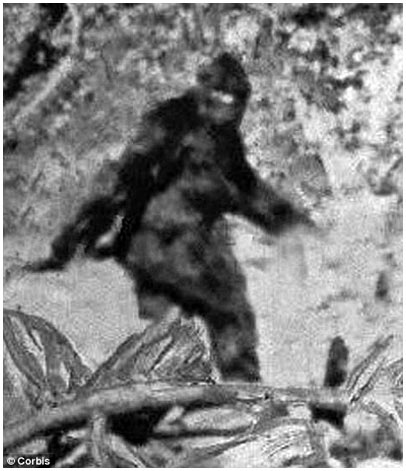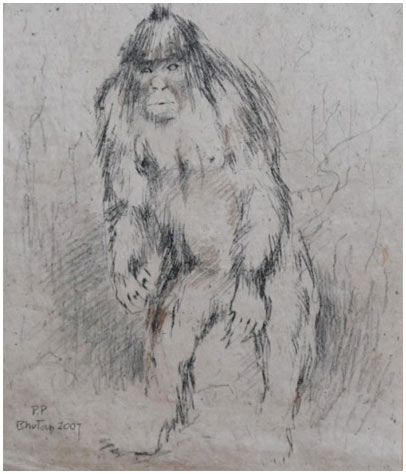'Deciphering the snowman' mystery
According to the description, the snowman is about 2.4m high, when it can bellow, it can cause avalanche; always evade and live in remote, less-known places. In recent days, evidence from British scientists has shown that this legendary animal actually exists.
Scientists used microscopes to analyze some of the hair strands found on the rocks in the old forest near the Indian-Bangladeshi border. Tests showed that these hairs were thick and tough, not of wild animals, but " exotic " hairs that were supposed to be collected by snowmen by Edmund Hillary when conquering Mount Everest. last century.
'These hairs are a clear evidence that snowmen already exist. We are excited to discover this, ' said researcher Ian Redmond.
Ian Redmond, along with colleagues at Brookes University Oxford (UK), dismissed the hypothesis that these hairs were from regional animals like black bears, monkeys, wolves and wild boars. When found, they were quite intact with the epidermis, about 3.3 to 4.4 cmm long, quite thick, strong and curled.

A photo of a snowman?- (Photo: Mailonsunday.co.uk)
'We have not found any similarities between these hairs and those living in the area. Surprisingly, they have a similarity with the hairs brought by Sir Edmund Hillary. We think they can provide valuable information about snowmen, ' said Ian Redmond.
According to scientists, DNA testing can help discover the secrets of snowmen. However, they are worried that once the existence of the snowman is confirmed, the number of searches for snowmen will increase, making it difficult for the existence of this small community.

Sketch of the snowman (Photo: Mailonsunday.co.uk)
The first official description of the snowman was made in 1889 by the English explorer LA Waddell. In his expedition diary, he wrote: 'There are big footprints in the snow that show it is of all the furry people. Wild people in this snowy area '.
By 1921, the British Royal Geography Society's Everest expedition team found the footprints of ' wild people living in the snow' at a height of more than 6,000m. Since then, the concept of wild snow has formed with many organized searches, but no one has discovered anything.

Footprints believed to be snowmen taken in 1951 (Photo: Mailonsunday.co.uk)
The snowman called the yeti in Tibetan , meaning stone bear.
In the ancient tales of Tibetans, snowmen are nocturnal, able to whistle and kill people with a single punch.
Investigators believe that there are two groups of snowmen that exist, including the dzu-the species about 2 - 2.4 m tall and the niches that are about 1.5 - 1.8 m high.
The snowman's footprint was 33 cm long and 25 cm wide.
Fossils of similar human-like monkeys were found at the foot of Mount Himalaya.

Mysterious: Snowman (Photo: Mailonsunday.co.uk)
The mysterious footprint of the Snowman in Nepal
- Explore the snowman mystery with DNA technology
- Search Snowman from another planet
- The mystery about 'Snowman' has been decoded?
- Latest discovery of the mysterious Yeti Snowman
- Scientists claim: The snowman is real
- Shoot the image of Snowman in Russia
- Indian troops claim to have found evidence of mysterious snowmen
- Discovering the footprints of the Snowman in Nepal
- Found traces of snowmen in Russia
- Controversy about the snowman's fur
- Find the shelter of Yetis Snowman in Russia
- The famous mystery in history has been solved
 The truth about the mysterious red-haired giant at Lovelock Cave
The truth about the mysterious red-haired giant at Lovelock Cave Inunaki Tunnel: The haunted road leading into Japan's 'village of death'
Inunaki Tunnel: The haunted road leading into Japan's 'village of death' The mystery of the phenomenon of human reflection before dying
The mystery of the phenomenon of human reflection before dying 6 mysterious phenomena, although science has been developed for a long time, still cannot be answered
6 mysterious phenomena, although science has been developed for a long time, still cannot be answered